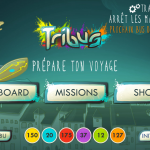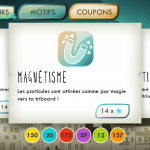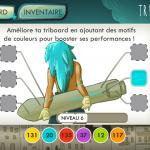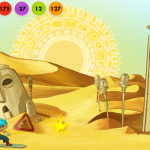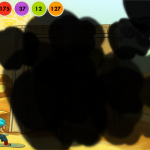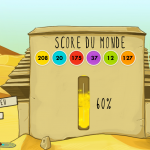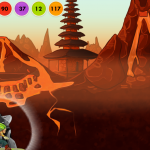One month ago I started to work on the CitruxEngine. I was very confident with Haxe performance on mobile and NME cross platform opportunities. And now, I can say those are awesome!
In April 14-15th, I was in Paris to assist to the Haxe conf 2012. It was really cool, Silex Labs has made a good job! Conferences were very interested and the community greatly friendly. And I had the opportunity to make a lightning talk concerning my contribution to the Citrus Engine 2D game framework and its port on Haxe NME. The presentation was a bit from scratch, but that was a good experience! I’m very happy to be the first to start the lightning talk, since there were very serious projects 😀
CitruxEngine Github.
CitruxEngine Demo. Simple demo which have been tested on Flash & CPP (using left/right key and spacebar) and iOS (touch & accelerometer). There are sound, animations (idle, walk and jump) and physics.
The port is currently not finished!
I will not present some code here. If you are already familiar with the Citrus Engine, there will be no problem. Take a look on the example on Github.
HTML5
When I started the port, I would the CitruxEngine be as cross platform as possible. HTML5 is promising, and Niel Drummond the man behind Jeash has made an incredible job! However I found that the Haxe NME Box2D port has not very good performance with HTML5. So I’ve dropped the HTML5 target at the moment, but I keep an eye on Jeash!
Box2D
Thanks to Haxe NME, Box2D runs very well on mobile! This is mostly the reason why I’ve started the CitruxEngine. The Citrus Engine uses the AS3 Alchemy version of Box2D which has some differences with the original. It seems there is a bug with the Haxe NME Box2D port : the beginContact & endContact listeners are fired all the time if a dynamic body is on a static body (like a hero on a platform), whereas it fires only once if there are 2 dynamics bodies. This behavior is blocking me.
SpriteSheets
I made my test with the spritesheet haxelib which uses SpriteLoq. At the moment it works well. I’ve not made serious test with animations.
Level Editor
I love how the Citrus Engine handles Flash Pro as a Level Editor. I would like the Haxe NME version handles it as well. But at the moment we can’t read AS3 code in a SWF file (it is the way that class and properties are defined), so I need to think to an external way. Maybe it’s time to reconsider the Level Architect!
Console
The console is really a cool feature of the Citrus Engine, it will be available in the CitruxEngine too. I’ve started to implement it, but it’s not ready yet.
I will continue to work on the CitruxEngine, but now I’ve to focus on my school project using Objective-C, it’s really hard to get back when you have tested Haxe power ! In less than two months I will be graduate and looking for a job, future is exciting.
Thanks to postite & elsassph for their help!

